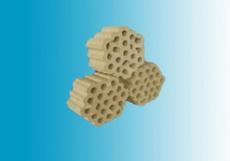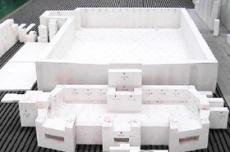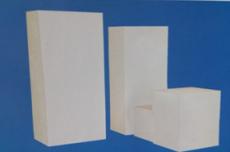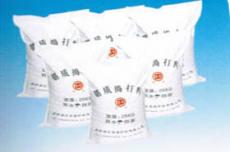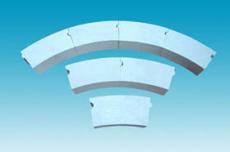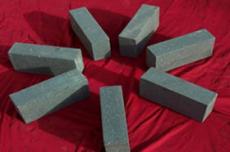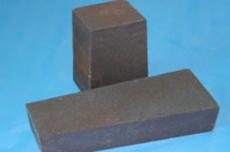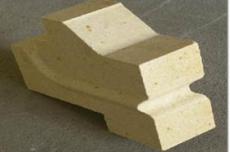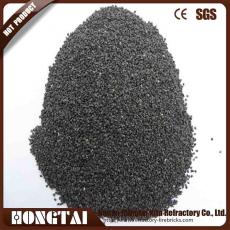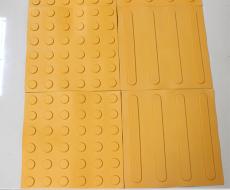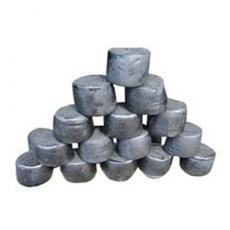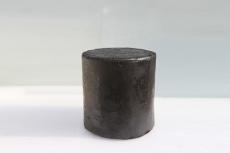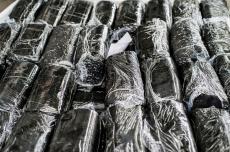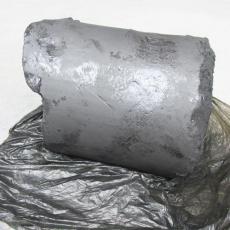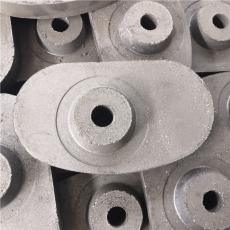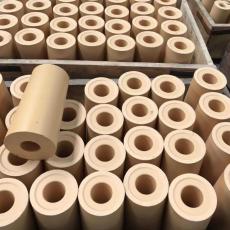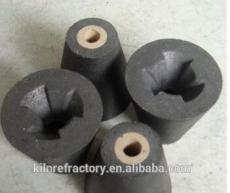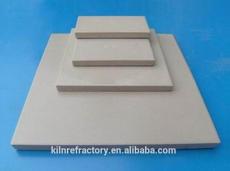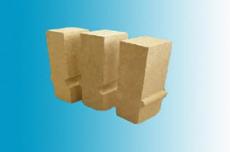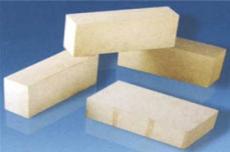
In the construction of glass furnaces, lightweight insulation bricks play a vital role. They not only effectively reduce heat loss, but also maintain a stable temperature within the furnace, thereby ensuring the quality and efficiency of glass melting. So, what types of lightweight insulation bricks are commonly used in glass melting furnaces? Let’s find out together.
PART 01Lightweight Clay Brick
The production of lightweight clay bricks first involves a precise proportion of raw materials. This material is usually made from a fine mixture of clay, clinker, and additives such as hardwood chips. Clay is the main raw material, with a content of about 30% to 40%, which provides basic plasticity and fire resistance for the product. The addition of clinker, accounting for 15% to 25%, enhances the strength of the product. Hardwood chips, accounting for as much as 30% to 45%, will burn to form pores during the firing process, thereby reducing the density of the product and achieving a "lightweight" effect.
In the production process, specific additives such as syrup and sulfite pulp waste liquid are added to improve the plasticity and stability of the mud. Subsequently, after careful mixing, trapping and shaping, a strict drying process is carried out to ensure that the residual moisture is less than 10%, which is crucial for subsequent firing and the final quality of the product.
The firing process is a key link in the production of lightweight clay bricks. It needs to be carried out at a high temperature of 1250 to 1350°C and kept warm for 4 hours to ensure that the chemical reaction inside the material is complete and the expected physical and chemical properties are achieved.
In addition, lightweight clay bricks can also be made by mixing with porous or hollow substances such as fly ash beads, diatomaceous earth, etc. This method further reduces the weight of the material while maintaining good thermal insulation properties.
Among the characteristics of lightweight clay bricks, its bulk density is between 0.4 and 1.3g/cm³. This feature makes it widely used in industrial kilns and other occasions that require thermal insulation. At the same time, lightweight clay bricks may need to be shaped after firing to ensure the accuracy and consistency of the product.
PART 02Lightweight silica brick
The preparation of lightweight silica bricks requires delicate operations and strict raw material control. First of all, the selected ordinary silica needs to be finely ground to ensure that its particle size is below 1mm. This is to ensure the uniformity and compactness of the finished product. Next, a specific proportion of anthracite or char is added, and the particle size of these additions needs to be precisely controlled to create the ideal porous structure during the firing process, thus reducing the density of the material.
In addition, a small amount of lime, gypsum and pulp waste liquid need to be added to the raw materials. These ingredients play a key auxiliary role in the shaping and firing process. After precise batching, mixing, shaping and drying, the lightweight silica bricks are fired at a high temperature of 1270 to 1300°C. This step requires extremely high temperature control of the kiln to ensure stable performance of the finished product.
The characteristics of lightweight silica bricks are also very outstanding. Its bulk density is controlled at 0.9~1.1g/cm³. This lightweight feature enables it to effectively reduce structural load in applications. At the same time, its thermal conductivity is only half that of ordinary silica bricks, showing excellent thermal insulation properties. In terms of thermal shock resistance, lightweight silica bricks also perform well and can remain stable in environments with rapid temperature changes.
It is worth mentioning that the load softening start temperature of lightweight silica bricks is as high as 1600°C, which is far higher than other lightweight refractory materials, such as lightweight clay bricks. Its maximum operating temperature can reach 1550°C, and it will not shrink in high temperature environments, but will expand slightly. This characteristic makes it have broad application prospects in high temperature industrial fields.
PART 03Lightweight high alumina brick
The production of lightweight high-alumina bricks first requires the selection of raw materials, mainly high-aluminum clinker and clay, and a small amount of sawdust is cleverly added to adjust the consistency of the blank. In order to maintain the stability of the mud, electrolytes such as Al2(SO4)3 need to be added during the production process. The purpose of adding a foam agent with a small surface tension is to form a stable and evenly distributed foam slurry, which is a key step to ensure that the lightweight high-alumina bricks have an ideal pore structure.
In the molding stage, the foam slurry is injected into the model using the pouring method, and the temperature and time during the drying process are precisely controlled to ensure the uniformity and stability of the green body. Especially after preliminary drying at low temperature, drying at high temperature is carried out to further remove residual moisture and prepare for the subsequent firing process.
The firing process is the core part of the manufacturing of lightweight high-alumina bricks. It needs to be carried out at a high temperature of 1300 to 1350°C and kept for 4 to 6 hours to ensure that sufficient physical and chemical reactions occur within the material to achieve the expected fire resistance and Mechanical strength.
The properties of lightweight high-alumina bricks are equally impressive. Its bulk density is controlled at 0.4~1.0g/cm³. This lightweight feature gives it significant advantages in reducing structural load. At the same time, the porosity as high as 66% to 67% not only reduces the thermal conductivity of the material, but also enhances the thermal insulation effect. These characteristics make lightweight high-alumina bricks widely used in insulation layers, linings of high-temperature industrial kilns, and other applications that require fire-resistant insulation.
PART 04Lightweight insulation board insulation cotton
Glass furnace is the core equipment in glass industrial production, and its energy consumption accounts for most of the entire production process. In order to improve the energy efficiency of the kiln and extend its service life, optimal insulation design is particularly important. Lightweight insulation board insulation cotton, especially ceramic fiber board, as an efficient insulation material, plays a key role in the insulation design of glass furnaces.
① Characteristics of ceramic fiber board
Lightweight and strong: Ceramic fiber boards have a lower density, making them lightweight and easy to install and maintain. At the same time, it has high strength and can withstand certain mechanical pressure and thermal stress.
Low thermal conductivity: The thermal conductivity of ceramic fiber board is very low, which means that it can effectively prevent the transfer of heat and provide good thermal insulation effect.
Small heat capacity: The material's small heat capacity means that it can quickly absorb and release heat, which helps to quickly adjust and stabilize the temperature in the kiln.
Corrosion resistance and oxidation resistance: Ceramic fiber boards have good corrosion resistance and oxidation resistance and can remain stable for a long time in high temperatures and corrosive environments.
② Application advantages of ceramic fiber boards in glass furnaces
Maintain the sealing of the kiln: Ceramic fiber board can be used as the backing insulation board of the kiln. Its excellent sealing performance helps to reduce heat loss in the kiln and improve energy efficiency.
Improved thermal insulation effect: Since ceramic fiber board has extremely low thermal conductivity, it can significantly reduce the heat loss of the kiln, thereby maintaining the stability of the temperature in the kiln, which is crucial for glass melting and quality improvement.
Extended kiln life: By reducing temperature fluctuations and thermal stresses inside the kiln, ceramic fiber panels help reduce damage to the kiln material, thereby extending the overall service life of the kiln.
Energy saving and environmental protection: The optimized thermal insulation design not only reduces energy consumption, but also reduces exhaust emissions, which meets the current social needs for energy saving and environmental protection.
Lightweight insulation bricks play an important role in glass melting furnaces. By selecting the appropriate type of lightweight insulation bricks and correct installation and maintenance methods, we can effectively improve the thermal efficiency of the glass melting furnace, reduce energy consumption, and contribute to the sustainable development of the glass production industry.
